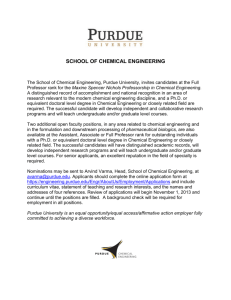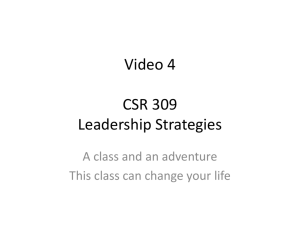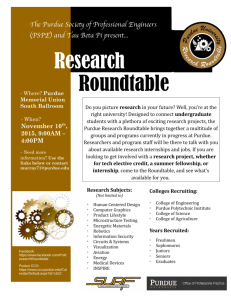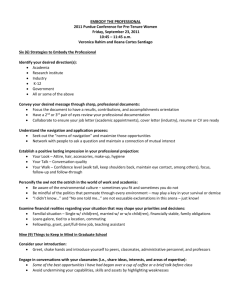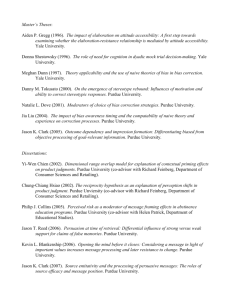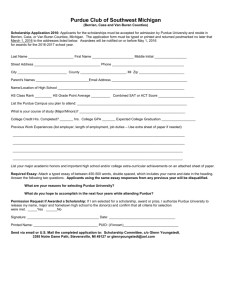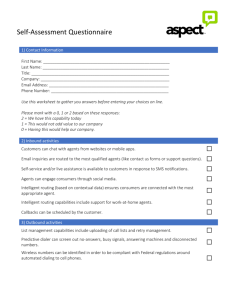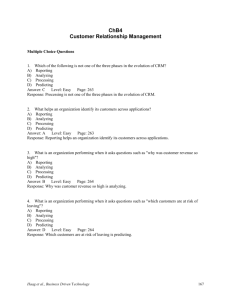Ten Trends in Contact centers
advertisement
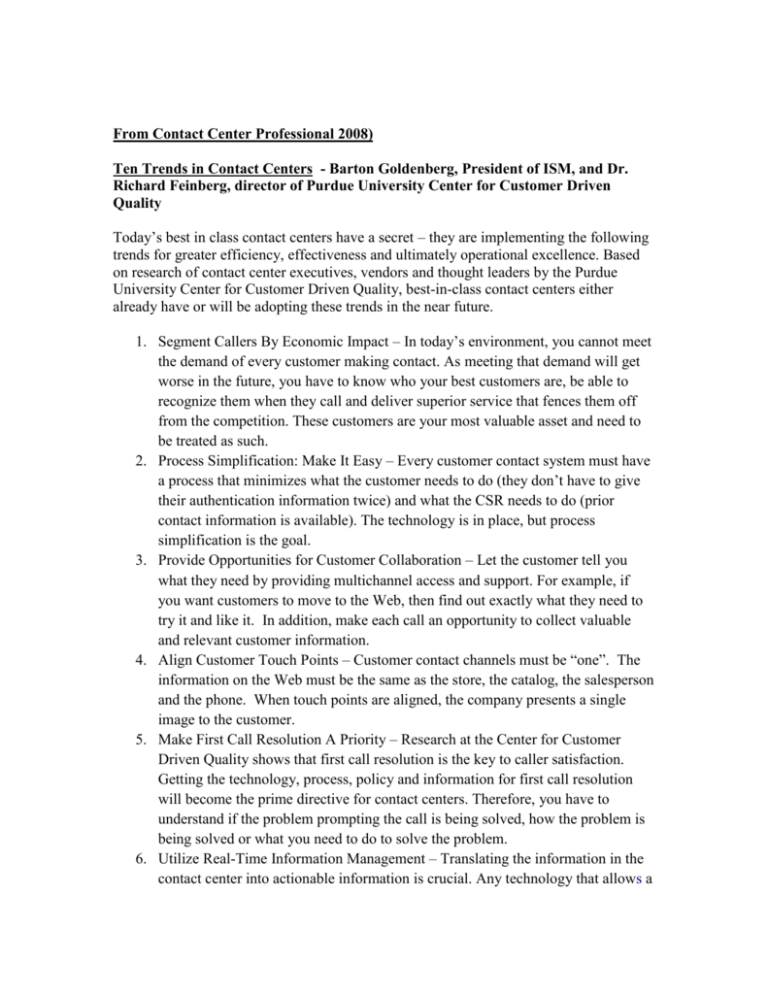
From Contact Center Professional 2008) Ten Trends in Contact Centers - Barton Goldenberg, President of ISM, and Dr. Richard Feinberg, director of Purdue University Center for Customer Driven Quality Today’s best in class contact centers have a secret – they are implementing the following trends for greater efficiency, effectiveness and ultimately operational excellence. Based on research of contact center executives, vendors and thought leaders by the Purdue University Center for Customer Driven Quality, best-in-class contact centers either already have or will be adopting these trends in the near future. 1. Segment Callers By Economic Impact – In today’s environment, you cannot meet the demand of every customer making contact. As meeting that demand will get worse in the future, you have to know who your best customers are, be able to recognize them when they call and deliver superior service that fences them off from the competition. These customers are your most valuable asset and need to be treated as such. 2. Process Simplification: Make It Easy – Every customer contact system must have a process that minimizes what the customer needs to do (they don’t have to give their authentication information twice) and what the CSR needs to do (prior contact information is available). The technology is in place, but process simplification is the goal. 3. Provide Opportunities for Customer Collaboration – Let the customer tell you what they need by providing multichannel access and support. For example, if you want customers to move to the Web, then find out exactly what they need to try it and like it. In addition, make each call an opportunity to collect valuable and relevant customer information. 4. Align Customer Touch Points – Customer contact channels must be “one”. The information on the Web must be the same as the store, the catalog, the salesperson and the phone. When touch points are aligned, the company presents a single image to the customer. 5. Make First Call Resolution A Priority – Research at the Center for Customer Driven Quality shows that first call resolution is the key to caller satisfaction. Getting the technology, process, policy and information for first call resolution will become the prime directive for contact centers. Therefore, you have to understand if the problem prompting the call is being solved, how the problem is being solved or what you need to do to solve the problem. 6. Utilize Real-Time Information Management – Translating the information in the contact center into actionable information is crucial. Any technology that allows a closer look at what the consumer thinks, feels and wants is good technology and has a payoff. Make certain that whatever it is you collect that someone is using it. Collect reports and find out who is using what for what. Get rid of the things that are not being used. 7. The Customer Experience: Pleasantries Pay – It is more than answering the call and solving the problem. Customers pay for a pleasant experience and the cost of providing that is nothing more than employing CSRs that understand the customer and will deliver a pleasant experience. 8. Self-Service: More Than An FAQ – As you cannot build out contact centers fast enough to keep up with demand, the solution is to keep customer satisfaction high by allowing customers to solve their problems in a self-service channel. Not all customers want this, but enough callers will to allow you to pay attention to more in depth issues. However, self-service takes more than a Website FAQ. One of the more successful applications to be adopted is natural speech recognition. We estimate that 35-75% of all telephone contact can be successfully handled by these systems. As these systems are now affordable and there are vendors with complete implementation experience, this technology will be adopted by all major contact centers in the next 10 years. 9. Adopt Technology that Delivers – Each week we get a call with a new technology, and some of them are quite intriguing. You must stay on top of new technology and have a team that assesses its potential benefit. Language translation, speech analytics and natural speech recognition systems are having a big impact. 10. CSR Selection and Continuing Training – A poor CSR loses customers, so hiring individuals who can quickly learn and adapt and providing ongoing training is essential to a successful contact center. Contact centers who invest in training programs to ensure CSRs have the tools and knowledge to best deal with your customers will succeed. About the Authors Barton Goldenberg (bgoldenberg@ismguide.com) is President and Founder of ISM Inc. ( http://www.ismguide.com), a CRM, contact center and digital client consulting firm in Bethesda, Md. He is the author of CRM In Real Time, and CRM Automation. He is founder and director of the DestinationCRM Conference. Richard Feinberg, Ph.D. (xdj1@purdue.edu) is a consumer psychologist, a professor in the Purdue University Department of Consumer Sciences and Retailing and the Director of the Center for Customer-Driven Quality at Purdue University (www.ccdq.com), the leading academic center for the study of contact centers and customer contact and home of the largest and deepest database of contact center measures. He is co-author of Cases in Call Center Management: Great ideas (Th)at work and co-founder of Call Center Campus.
